Endurance and scalability – that’s how you should be judging the efficacy and relevancy of a consulting framework. From classic frameworks such as SWOT and Porter’s Five Forces to the more recent explosion of the Consumer Decision Journey in the age of digital marketing, consulting models are an incredibly useful way to make a stream of convoluted information feel sane and manageable again.
The best and most enduring frameworks are diagrammatic in nature and easily adaptable when you try to create PowerPoint presentations. Using online editors, frameworks can be mapped to your business’s internal and external operations, often giving you a simplified, visual way in which to organize information and business strategy. At the end of the day, these frameworks are about gaining clarity.
So the last thing they should be is complex or overly complicated in either analysis or diagramming.
What are Consulting Frameworks?
When you bring in a consultant to solve your pressing business problem, frameworks are the models used to show information, and then craft and articulate a pathway to the solution using presentation templates.
Think about business frameworks like your own, personalized roadmap to success. And success, for your business, can be based on a variety of different metrics. So it’s best to define “success” as the ultimate completion of the goal you’re trying to achieve or the problem you’re trying to solve.
Eventually, every win or success should contribute to growth, revenue, and an innovative workplace culture, so let’s leave these broad and often lofty goals aside and dare to get specific.
Why Do Business Frameworks Make Such a Big Difference to Business?
You should think about analytical frameworks as tools, rather than a be-all and end-all solution that will address every single issue you’re facing. And, as a tool, the framework is only as effective as your analysts’ abilities to capture the information, sort through the data, and then clearly communicate these through simple but powerful diagrams.
External frameworks – those designed to address issues outside your business – include:
- Porter’s Five Forces
- PESTLE
- Scenario Planning
Internal frameworks are ones you would use to analyze issues within the business, which include:
- SWOT
- Balanced Scorecard
- Value Chain Analysis
A word on customized or bespoke frameworks: They work! But they’re only useful if you have a familiarity with the most classic and original frameworks. To use the terminology of self-help programs: “It works if you work it!”
Here are 10 consulting or business frameworks you would be wise to work with.
10 Business Frameworks You Can Use to 10x Your Operations
In the same way that raising children demands discipline and kids actually respond well to boundaries, information influx needs to be curbed. If you don’t order and structure information and data in and about your business, you’re actually doing it a disservice. Using these 10 frameworks to perform analysis will help you make crucial decisions about your business success.
1) MECE Framework
Pronounced as “ME-SEE” the MECE Framework stands for “Mutually Exclusive, Collectively Exhaustive.” It’s a kind of thought-process that allows the analyst to keep ideas well-categorized and easily digestible. Every point on the MECE list needs to be mutually exclusive, without any overlaps, and exist independently. The list is “exhaustive” because it needs to account for all possible scenarios.
2) Porter’s 5 Forces
5 Forces is one of the most popular and foundational frameworks you can use. It analyzes operations from the perspective of a balance of power. The idea here is that sustainable profitability and a competitive market position depends on power. Porter’s Five Forces helps you gain clarity on what your current competitive position looks like and where to move next to either maintain or enhance this position.
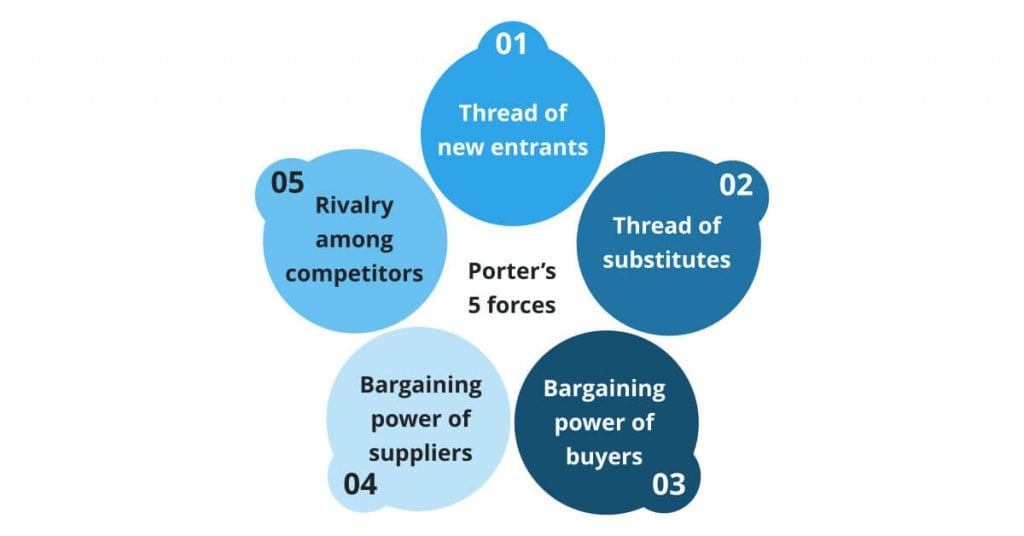
You can create a diagram like this one in Xara Cloud. It takes seconds to do.
3) Balanced Scorecard
The Balanced Scorecard framework is a highly adaptive framework that goes as high-level (or as detailed) as you’d like. It’s based on the idea that what you measure is what you focus on. And what you focus on is what you improve. The Balanced Scorecard methodology can allow you to empower your operations by linking performance measures together. This can result in a stunning presentation that is both informative and visually succinct.
4) Benchmarking
Benchmarking is a process that involves a workflow, but the term refers to the actual work being done as well as the final model or presentation. As you can imagine, benchmarking helps you clarify where you are as well as where you’d like to be. Your analysis team gets to determine what quality processes and outcomes mean for your business. This also trickles down into related functions like QA.
5) Growth-Share Matrix
Attributed to the founder of BCG, Bruce Henderson. The Growth-Share Matrix is a portfolio management tool that allows companies to make decisions around how to prioritize different parts of their business, based on their degree of perceived profitability.
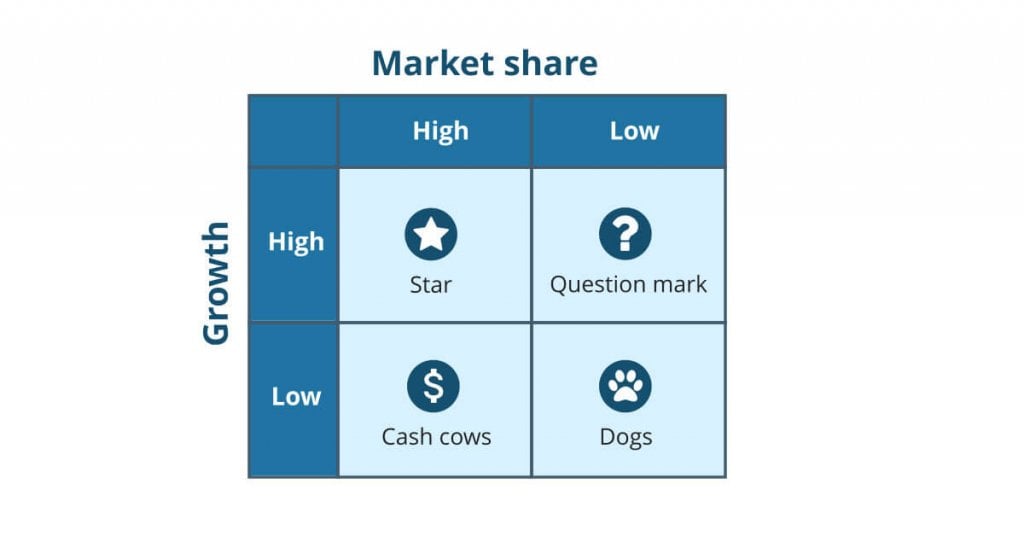
You can create a personalized Growth Share Matrix Xara Cloud. It is free to download and use in any document.
6) Core Competencies Framework
A variety of professions depend on the Core Competencies framework. It gives managers a tool to clarify expectations and set consistent standards for every “competency” or skill that is involved in a goal. Your team can divide up the set of competencies that they’d like to address and focus on. These are also areas where you want to see improvement, not just what you already do well.
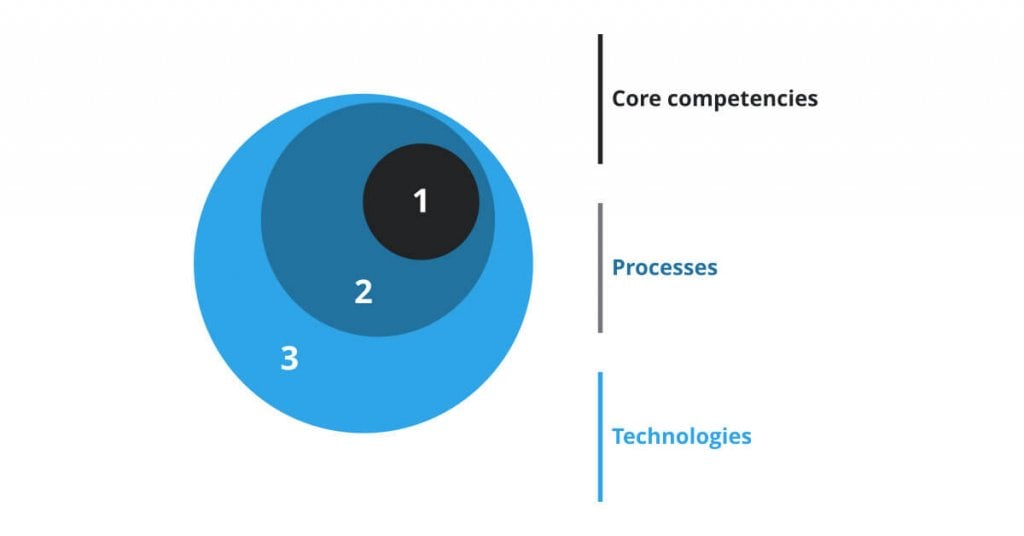
We have plenty of diagrams like this one in Xara Cloud. It takes seconds to add your colors and content.
7) Marketing 4ps
The Four “Ps” of Marketing is a well-known framework that helps marketing specialists to gain clarity on the big areas of focus that Marketing, as a discipline and skill, involves. These are the levers that help focus marketing initiatives. The levers are the “Ps” of “Product,” “Pricing,” “Promotion,” and “Place.” These four areas should trigger a set of specific questions that your analyst team will then work to answer.
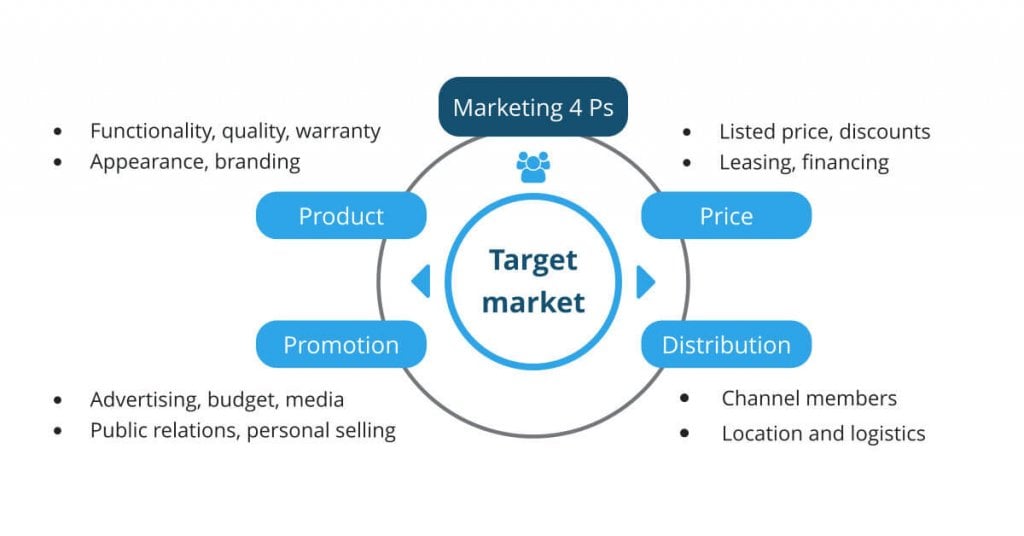
Have a look at our +50 diagrams at Xara Cloud. Make your PowerPoint presentations more visual.
8) PEST Analysis Templates
PEST considers the external factors that may put significant pressure on your business’s operations. These comprise “political,” “economic,” “social,” and “technological” factors that are then used to assess the market for a business.
PEST analysis templates create impressive presentations that are highly adaptive to a variety of market situations. They can provide a high-level analysis or a review of a company’s strategy or position, the direction of a business, or even vetting a new marketing idea. PEST analysis has also developed to include two more categories: “Environment” and “Legal.” The acronym expands to PESTLE.
9) Profitability Framework
For obvious reasons, Profitability Frameworks get right to the very core of a business’s most pressing preoccupations. Focusing on problems emerging from falling prices, declining sales volumes, rising costs, and other aspects of the profit equation, the Profitability Framework maps out every branch of the profit maxim.
From here, analysts can move up or go down a level, exploring where the bottleneck of the issue occurs.
10) McKinsey 7S Framework
There are seven key elements in the popular McKinsey Framework, which is easily translatable into effective PowerPoint presentations. This ease of communication is part of the reason why analysts rely on the 7S framework. The other aspect is, of course, its thoroughness.
Developed in the 1980s by McKinsey consultants, the 7S model covers seven elements, including strategy, structure, systems, shared values, style, staff and skills. These are used as jumping-off points to determine alignment and quality in the overall functions of a business.
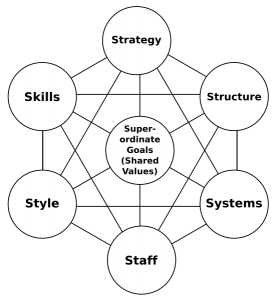
Conclusion
A parting word on strategic frameworks: It’s not a one-size-fits-all sort of situation here. You can choose the wrong framework for the problem if you or the analyst has a poor understanding of the issue in the first place. Before you even begin with a consulting framework, you need a thorough understanding of what’s at stake, what you’re trying to achieve, and how aligned recommendations would, ideally, solve these issues.
Sign up to Xara today for a free trial
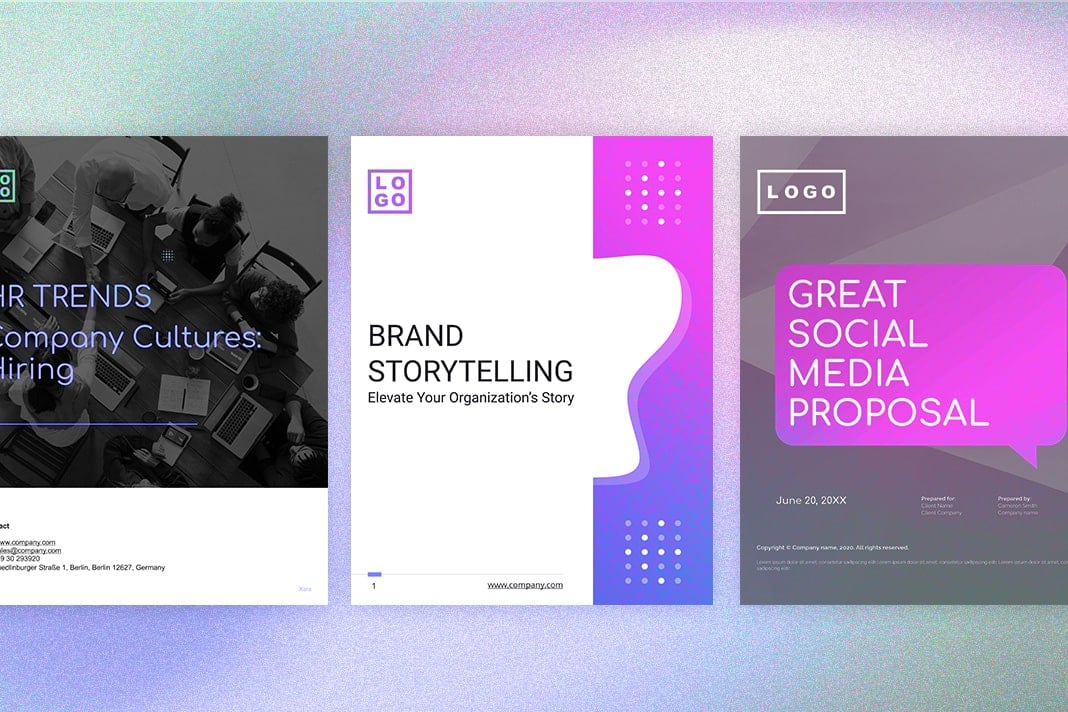

 No credit card or phone number required.
No credit card or phone number required.